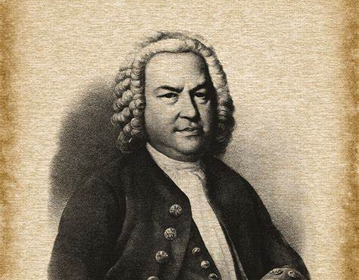Music Instrument: Piano
Programme:Toccata in e minor
Composer:Johann Sebastian Bach
Toccata in e minor, written by Baroque composer Johann Sebastien Bach, was one of the 7 toccatas (BWV 910-916) that he wrote. The toccatas were created by Bach when he was working in Weimar in his early years.
The word ‘Toccata’ came from the Italian word meaning touching, and Toccatas were often free and a bit improvisational. In the late Baroque period, composers tend to combine the earlier toccata form with fugues, with slower, freer toccatas and quicker, stricter fugues alternating.
Bach’s BWV 914 toccata consists of two slower toccata-like movements and two fugues. The first movement is a very long sentence and introduction to the fugetta of 4 voices. The fugetta has two themes interweaving with one another. Between the themes are scattered motifs of the themes, making the music more solid. The third movement is a longer slow movement, with beautiful semiquavers and various broken chords. This movement seems to be collecting power for the final movement, which is a quick fugue of 3 voices. The fugue has a very long theme, and the flowing semiquavers went through the whole movement. It started as only a single line but becomes stronger and stronger, as if we were entering the heaven.
Although the toccata was an early piece by Bach, we can notice the depth of Bach’s works, and we can also find many revolutionary ideas, such as jumps between octaves.
乐器: 钢琴
曲目:托卡塔e小调 BWV914
作曲者:约翰-塞巴斯蒂安·巴赫
这首托卡塔出自于巴洛克作曲家巴赫之手,巴赫一共写了7首托卡塔(BWV910-916)。这些托卡塔都是在巴赫在魏玛工作时创作的。
BWV 914 托卡塔包含两段托卡塔风格的乐章和两段赋格。第一乐章给之后的3声部小赋格提供了引子。小赋格有2个主题组成,主题之间的插部主要由主题中的一些动机构成,从而使音乐变得更加丰富。第三乐章是首柔板,极其优美的16分音符和分解和弦是该乐章的主要成分。音乐在此乐章汇聚了足够的能量,而后在最后的赋格乐章得到释放。这首赋格有段比较长的主题,而持续的16分音符则是贯穿了整个乐章,从单声部开始,之后越发复杂,犹如上升天堂。
虽然这首托卡塔是巴赫的早期作品,但我们还能发现一些在写作上的创新,例如一些8度跳越等。

